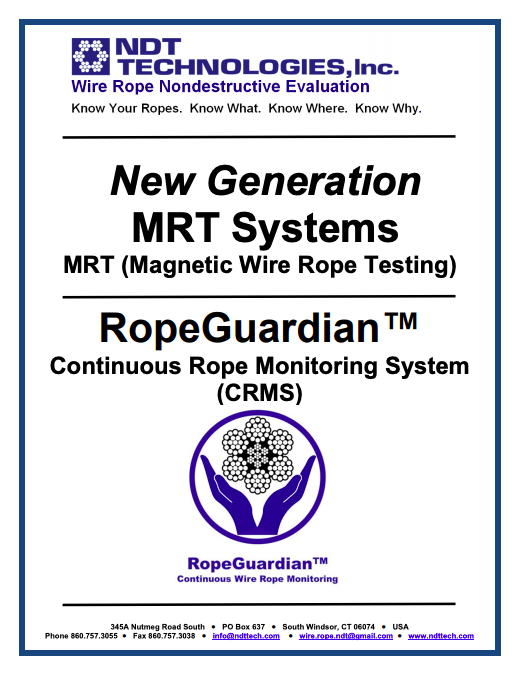Our Products
 Download our Specification Sheets
Download our Specification Sheets
Our rope testers are of the triple-function LMA/WRR/LF type. This means three high-resolution signals make chart interpretation direct, reliable and simple.
The three signals are:
- The LMA Signal measures loss of metallic cross-sectional area (LMA) caused by corrosion, abrasion, etc. The LMA Signal is quantitative and can be calibrated. (Typically, a rope must be retired when the LMA exceeds 10%).
- The WRR Signal measures wire rope roughness (WRR). WRR is defined as the aggregate surface roughness of all wires in a rope. WRR is typically caused by and indicates internal and external corrosion pitting, broken wires and clusters of broken wires. The WRR signal is quantitative, and it is calibrated together with the LMA Signal.
- The LF Signal can indicate localized flaws (LF), for example, broken wires, corrosion pitting, etc. Because it is only qualitative - and cannot be calibrated - it is of limited value for assessing rope deterioration and for making rope retirement decisions.
Resolution or Inspection Accuracy is the single most important performance measure for any scientific or engineering instrument.
Our rope testers offer a Quantitative Resolution (also called Scanning or Averaging Length) that is superior, by an order of magnitude, to that of any competing instrumentation. This superior inspection accuracy allows for economical and safe wire rope operation.
- Easy Operation – LMA-TEST™ wire rope testers are easy to operate. Their unmatched inspection accuracy makes chart interpretation direct, obvious and reliable, even for moderately skilled personnel.
- Reliability – Surface as well as internal faults are detected and measured. Inspections are not affected by grease, paint, dirt or plastic sealing material. Permanent inspection records are available.
- Weight – Careful design, using ultra-powerful rare-earth permanent magnets, make our rope testers lighter than most competing instruments.
- Battery Operation – Battery operation makes our instrumentation easy to use, even under adverse field conditions. Furthermore, the use of batteries eliminates electromagnetic interference problems caused by noisy power lines present in many industrial installations.
Products We Offer
- LMA-75
- LMA-125
- LMA-175L
- LMA-175
- LMA-300
- DAQ-05
- LMA-250
- LMA-250S
- LMA-450
- LMA-550
- LMA-650
For a full product list and specification sheet, please click here.
